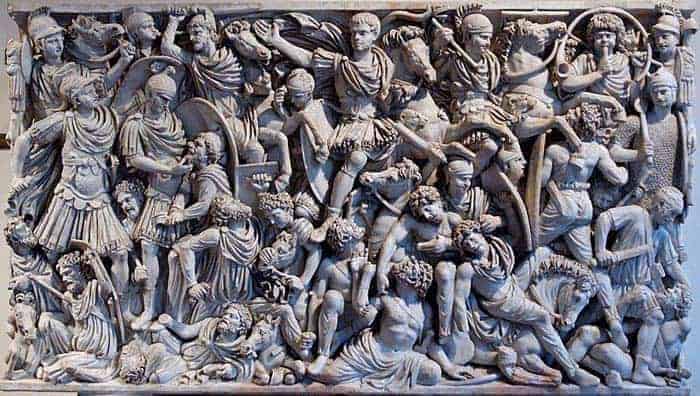The Third Century crisis in the Roman Empire lasted from 235-284 AD and was a period of utter chaos. During this period, the Empire almost collapsed in the face of economic depression, plague, foreign invaders, and civil war. Also known as ‘The Anarchy,’ it involved the collapse of governmental authority in Rome and resulted in the military becoming inextricably linked to the throne.
The crisis officially began with the death of Emperor Alexander Severus who was assassinated by Maximinus Thrax’s rebellious troops in 235 AD. Although Cassius Dio had complained about Rome entering an ‘age of iron and rust,’ which meant ‘decay,’ no one could have predicted the carnage that would unfold upon the death of Severus. For the previous two and a half centuries, the Empire enjoyed relative security.
Yes, it had lost notable battles but was never in genuine danger of falling apart. This changed in the years immediately following the death of Severus, as Rome lurched from crisis to crisis and only barely survived. Even though it lasted for almost 200 more years in the West, it emerged from The Anarchy fundamentally changed. But what were the main causes of the Third Century crisis? Read on to find out.

1 – The Emergence of Barracks Emperors
The Third Century crisis brought about the phenomenon of ‘Barracks Emperors.’ These were men who had a strong military background and used their power to curry the favor of soldiers. The man who had the army at his command could usurp the throne and murder the Emperor. This is what happened to Severus, but his family must take much of the blame for this situation occurring in the first place.
In ‘Roman History,’ Cassius Dio wrote about how the title of Emperor was more or less ‘auctioned off’ upon the death of Pertinax in 193 AD. He was the first ruler in the Year of Five Emperors and eventually, Septimius Severus took the throne and held onto it until he died in 211 AD. Dio claims that on his deathbed, Septimius told his sons Caracalla and Geta “Be harmonious, enrich the soldiers and scorn all other men.”
His sons and subsequent emperors clearly followed his advice because they raised new legions and during the Severan Dynasty, military wages increased by an incredible 200%. Throughout the crisis, Emperors continued with this policy and routinely bribed soldiers to stand by their side. During the nearly half-century of chaos, up to 50 men were proclaimed emperors (not all were ‘official’ leaders), and most lasted no longer than a few months. Only a few rulers, such as Valerian (253-260) and Gallienus (253-268), reigned for any length of time (they acted as co-emperors until Valerian’s death after being captured by the Persians).
It is important to note that the Roman Empire was divided into three separate states for a brief period in the third century. Multiple provinces broke away to form the Gallic Empire (260 AD) and the Palmyrene Empire (267 AD), and each one declared its own leaders. Up until the death of Valerian, it appeared as if Rome was getting a handle on the crisis, but after the assassination of Gallienus in 268 AD, a series of soldier emperors attempted to take control, only to find an enemy waiting around the corner.
In simple terms, no one was strong enough to take control, and as a result, justice, fairness, and security were replaced by violence and death. Even excellent emperors such as Emperor Aurelian were unable to avoid assassination, and it appeared as if the throne could be bought and sold with the aid of the army. Emperors had a problem if they faced war on two fronts. If they chose someone to deal with the second front and that general was successful, he could convince the army to back him in a bid for the throne. Paying so much money to soldiers also led to another reason for the crisis.

